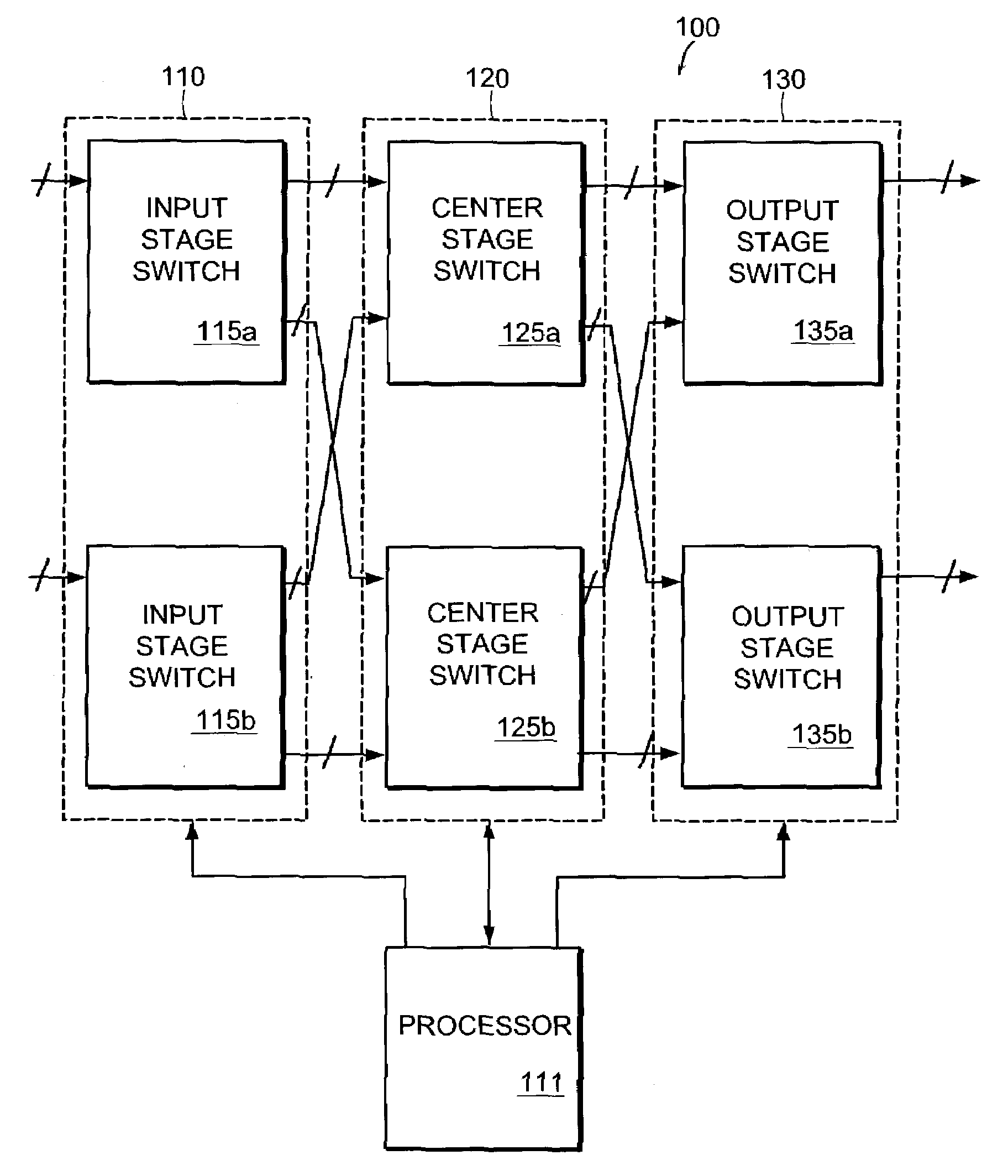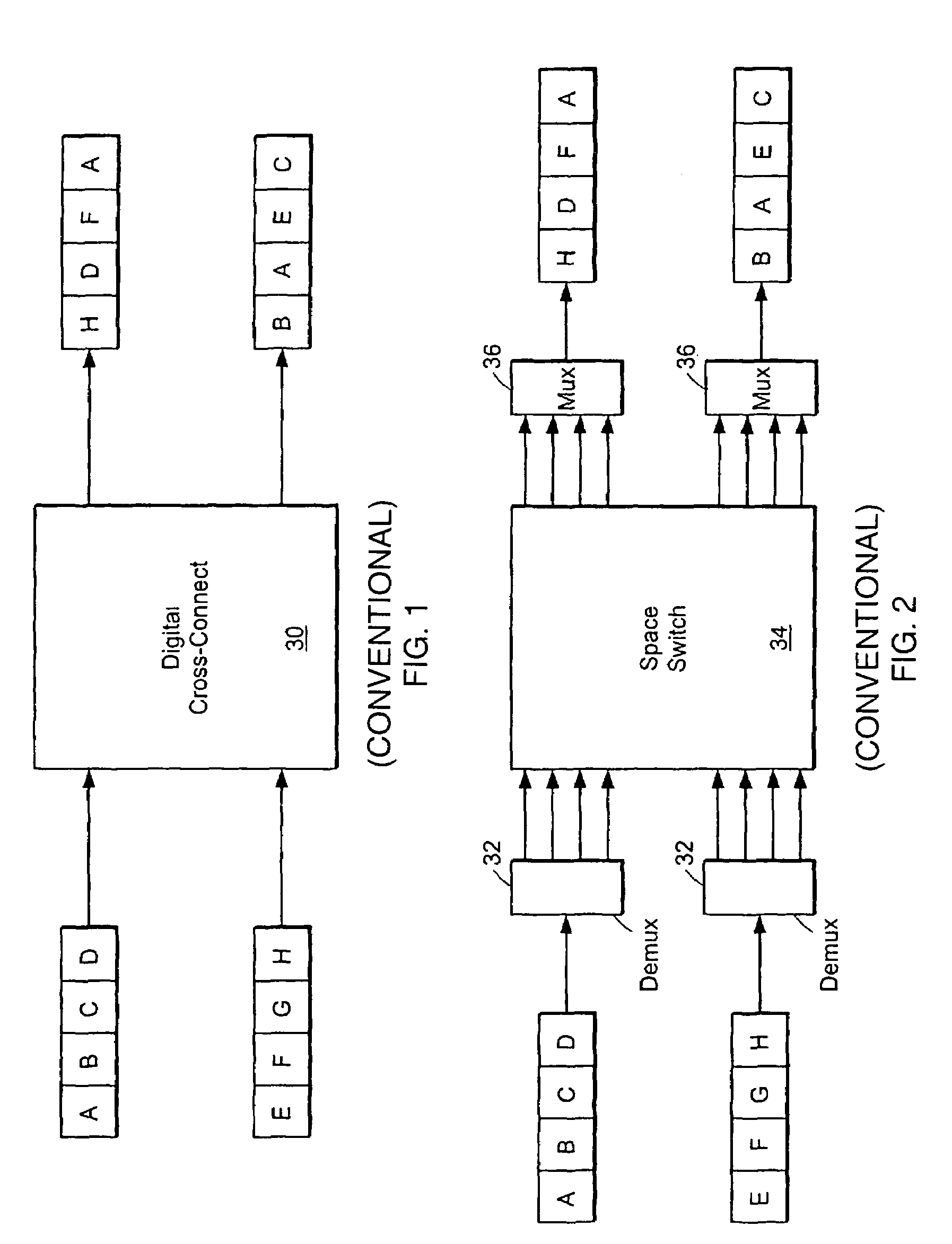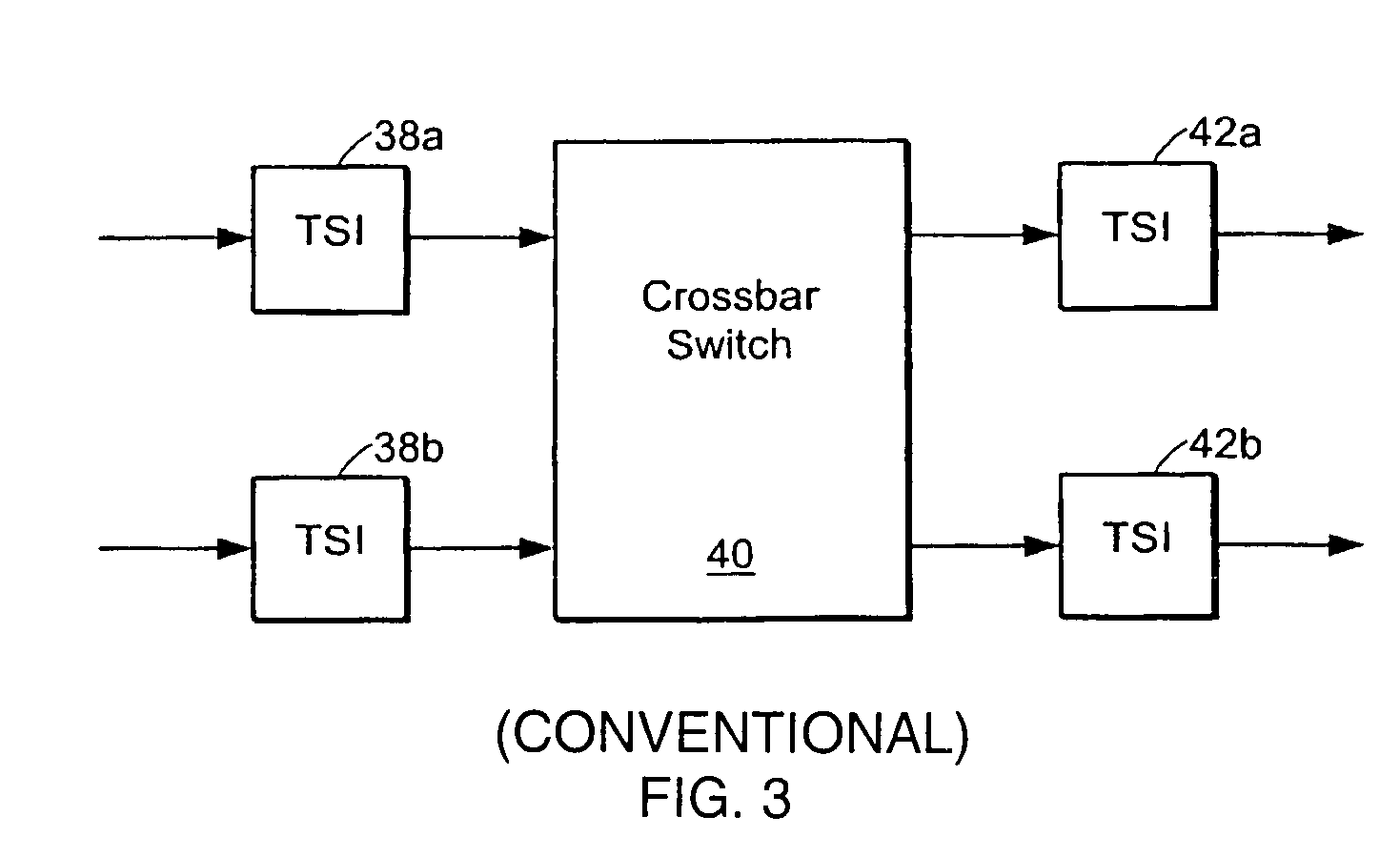Scheduling connections in a multi-stage switch to retain non-blocking properties of constituent switching elements
a multi-stage switch and scheduling algorithm technology, applied in the direction of data switching networks, electrical equipment, digital transmission, etc., can solve the problems of large switch operation at a very slow rate, large switch is too large to be economically used for large cross-connects, and none of the known scheduling algorithms provide non-blocking operation for unicast, etc., to and minimize the difference in the number of connections
- Summary
- Abstract
- Description
- Claims
- Application Information
AI Technical Summary
Benefits of technology
Problems solved by technology
Method used
Image
Examples
Embodiment Construction
[0042]A description of preferred embodiments of the invention follows.
[0043]Embodiments of the invention include a scheduling algorithm that implements a method of scheduling connections in a multi-stage switch, resulting in less switching elements being required than known switching architectures to increase bandwidth and to retain the non-blocking properties of the constituent switching elements for incoming traffic, including multicast traffic. A scheduling algorithm is also provided that implements a method of incremental scheduling of connections being added or removed in a multi-stage switch.
[0044]Particular embodiments of the invention include a multi-stage switch with two input stage switching elements, two output stage switching elements, and two center stage switching elements coupling the two input stage switching elements to the two output stage switching elements. Each of the respective switching elements have non-blocking properties for incoming traffic, including mult...
PUM
 Login to View More
Login to View More Abstract
Description
Claims
Application Information
 Login to View More
Login to View More - R&D
- Intellectual Property
- Life Sciences
- Materials
- Tech Scout
- Unparalleled Data Quality
- Higher Quality Content
- 60% Fewer Hallucinations
Browse by: Latest US Patents, China's latest patents, Technical Efficacy Thesaurus, Application Domain, Technology Topic, Popular Technical Reports.
© 2025 PatSnap. All rights reserved.Legal|Privacy policy|Modern Slavery Act Transparency Statement|Sitemap|About US| Contact US: help@patsnap.com



